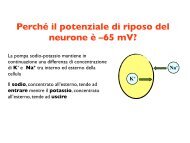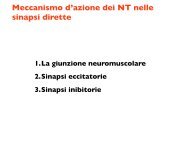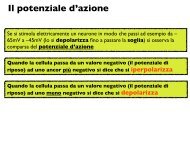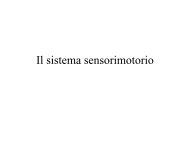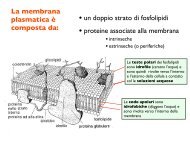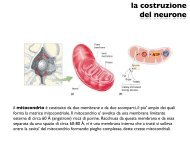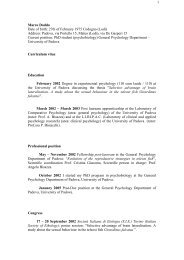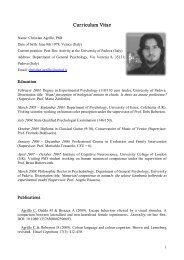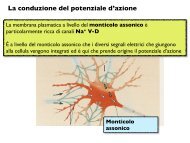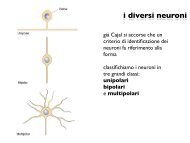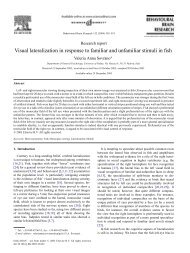Sexual behaviour of immature male eastern mosquitofish: a ... - CPRG
Sexual behaviour of immature male eastern mosquitofish: a ... - CPRG
Sexual behaviour of immature male eastern mosquitofish: a ... - CPRG
You also want an ePaper? Increase the reach of your titles
YUMPU automatically turns print PDFs into web optimized ePapers that Google loves.
sexual <strong>behaviour</strong> <strong>of</strong> <strong>immature</strong> <strong>male</strong> mosquit<strong>of</strong>ish 727<br />
include sexual acts in their play and in some cases a complete coitus is achieved<br />
(Ford & Beach, 1951; Mason, 1965). Among chimpanzee (Pan troglodytes<br />
Blumenbach), young with no previous sexual experience are not immediately able<br />
to copulate successfully, which suggests a possible role for sexual play. In<br />
aquarium studies, <strong>immature</strong> <strong>male</strong>s <strong>of</strong> the <strong>eastern</strong> mosquit<strong>of</strong>ish (Gambusia holbrooki<br />
Girard) exhibit precocious copulatory activity, and their rate <strong>of</strong> copulatory<br />
attempts was comparable to that <strong>of</strong> adults (Bisazza, unpublished data).<br />
Gambusia holbrooki is a small poeciliid fish commonly found in brackish and<br />
fresh waters <strong>of</strong> Italy, where it was introduced from North America at the<br />
beginning <strong>of</strong> this century. Fertilization is internal and the <strong>male</strong> uses its modified<br />
anal fin (gonopodium) to transfer sperm to the fe<strong>male</strong>. As in most poeciliids<br />
(Constantz, 1975; Farr, 1984), <strong>male</strong> sexual activity mainly consists in approaching<br />
the fe<strong>male</strong> from behind, moving the gonopodium forward and trying to<br />
introduce forcibly the gonopodial tip into her genital pore (gonopodial thrusting).<br />
In this species, fe<strong>male</strong>s rarely if ever show receptivity. Males make<br />
copulatory attempts at a very high rate, but only a small proportion <strong>of</strong> them is<br />
successful (Martin, 1975; Bisazza & Marin, 1995). Male mosquit<strong>of</strong>ish, typical <strong>of</strong><br />
most poeciliid species, stop growing when they become sexually mature (Schultz,<br />
1961; Borowsky, 1973a; Zulian, 1990) and body size attained at maturation<br />
changes in response to the social environment (Borowsky, 1973b; Sohn, 1977).<br />
To explain the <strong>behaviour</strong> <strong>of</strong> <strong>immature</strong> <strong>male</strong> mosquit<strong>of</strong>ish, two hypotheses were<br />
proposed. The first one postulates that, as observed in apes and other vertebrates,<br />
experience gained when <strong>immature</strong> increases the efficiency <strong>of</strong> later sexual <strong>behaviour</strong><br />
as adults. The second hypothesis, which will be discussed in more detail later, is<br />
derived from the peculiar reproductive biology <strong>of</strong> this species. The success <strong>of</strong><br />
mating attempts in G. holbrooki is in fact negatively correlated with the <strong>male</strong>’s size<br />
(Bisazza, 1993; Bisazza & Marin, 1995), a relationship observed in other poeciliid<br />
species and possibly a general phenomenon in this family (Farr et al., 1986).<br />
Conversely, both intrasexual selection and fe<strong>male</strong> preference tend to favour the<br />
largest in a group <strong>of</strong> <strong>male</strong>s (Bisazza & Marin, 1991; 1995). Computer simulations<br />
indicate that when <strong>male</strong>s are rare and the encounter rate between them is low,<br />
<strong>male</strong>s should mature at a small size, but when population density is high and the<br />
sex ratio is <strong>male</strong> biased, the influence <strong>of</strong> intra- and intersexual selection increases<br />
and <strong>male</strong>s should delay maturation to attain a large size (Bisazza & Marin, 1995).<br />
It is suggested that by attempting to copulate with fe<strong>male</strong>s, <strong>immature</strong> <strong>male</strong>s gain<br />
information about their probable reproductive success at their present body size,<br />
and accordingly ‘ decide ’ whether to delay maturity or not.<br />
In the first part <strong>of</strong> this paper information is given about the ontogeny <strong>of</strong> <strong>male</strong><br />
sexual <strong>behaviour</strong> and the interactions between adults and <strong>immature</strong> <strong>male</strong>s<br />
described in relation to their developmental stage. In the second part, two<br />
experiments aimed at testing the two explanations for the presence <strong>of</strong> intense<br />
sexual activity in <strong>immature</strong> <strong>male</strong>s are presented.<br />
MATERIALS AND METHODS<br />
EXPERIMENTAL ANIMALS<br />
The individuals used for this work were captured during the breeding season in three<br />
different bodies <strong>of</strong> water <strong>of</strong> Northern Italy. Mostly handnets were used, with a 2·5 mm




